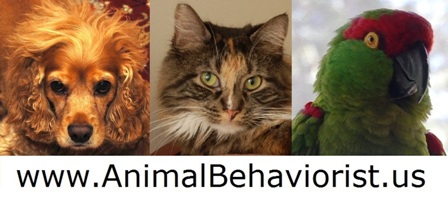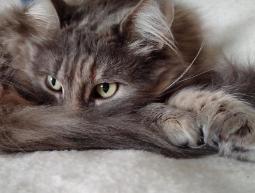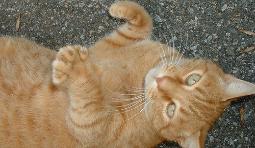
Catnip and Cats |
Catnip and cats- good and good for them
copyright (c) 2021 Frania Shelley-Grielen. All rights reserved.
Cats are very attached to where they live and how the live in those spaces
affects their wellbeing or welfare. Making the environment more cat
friendly includes making sure there are people for petting and play,
scratch posts, hiding spaces, cat beds and raised resting spaces and yes, cat
nip. We already know that most cats love catnip even if we are not sure
about how good it is for them. Cats just seem to like it a little too, too much
and that must make it wrong- right? Get ready to relax about catnip;
veterinary associations and veterinarians, like the AVMA and VetStreet's
Dr. Marty Becker confirm the plant is non toxic to cats and can actually
benefit them. Adding cat nip to the list of effective improvements or
“enrichments” to our cat’s living space makes for happier cats and happier
cats are healthier cats.
While the leaves and the flowers of the cat nip may be the most well
known, it’s not the only plant that cats are in love with. Silver vine fruit,
Tatarian honeysuckle wood and valerian root are also cat attractants. To
test which plant had the biggest impact on kitty, a recent study looked at
100 cats in home and shelters along with 14 big cats (bob cats and tigers)
and their responses to each one. The scientists were looking for the “cat
nip response” (yes, there is term for that, take a look) defined as: “sniffing,
licking, shaking their head, rubbing (chin/cheek) and rolling on their back,
sometimes accompanied by drooling and raking,” (“raking’ is kicking with
the back legs or “bunny kicking”), how intense it was – sniffing and licking
only or sniffing, licking, rubbing or rolling over and how long it lasted –
less than 10 seconds? More than 15 seconds? Of the 100 domestic cats
studied, 79 of them responded positive to the silver vine, 68 to catnip,
53 to Tatarian honeysuckle and 47 to valerian root. While the response
to silver vine (79%) was close to the response to cat nip (68%) the response
of the cats to the silver vine was significantly more intense. When just
looking at the differences between how older and younger cats responded
to cat nip, the researchers found less mild and more intense responses in
younger cats compared to the older cats. What about the big cats? Tigers
are known to be less caring than other cats about scent enrichments and
true to form, only one out of nine tigers responded positively to cat nip and
all tigers either ignored or disapproved of the silver vine. Five bobcats
were tested with 4 responding positively to silver vine and 1 to cat nip, the
bobcat’s response was among the most intense seen lasting from several
to 15 minutes.
Use the power of catnip for the good of your cat- rub it into scratching
posts to heighten their appeal, sprinkle in a corner of their beds or resting
areas (catnip is also available as a spray), fill a clean sock with dried catnip
and tie it off for the best cat nip toy. Try growing some for kitty to enjoy,
cat nip is a member of the mint family and easily grows from seeds. But do
use catnip for the simple reason that most cats love it and that is a good
enough reason.
For those of us, myself included, who are interested in the other plants
cats love; you can find powdered valerian root in drug stores where it is
sold for it tranquillizing properties (cat nip is said to have a similar effect
for humans). Tatarian honeysuckle is considered an invasive species in
many states (including mine) so it may be difficult to obtain. The part of
the silver vine that the cats are attracted to is the fruit of the plant after
the gall midge has matured and moved out of it. Gall midges are only
found in certain areas of Asia but powdered silver vine galls can be found
online and were used in the study.
References
Bol, S., J. Caspers, L. Buckingham, G.D. Anderson-Shelton, C. Ridgway, C.A. Tony Buffington,
S. Schulz, E. M. Bunnik, (2017) Responsiveness of cats (Feidae) to silver vine (Actinidaia
polygama), Tatarian honeysuckle (Lonicera tatarica), valerian (Valeriana officinalis) and
catnip (Nepeta cataria). BMC VeterinaryResearch, 13:70
This article is an original work and is subject to copyright. You may create a
link to this article on another website or in a document back to this web page.
You may not copy this article in whole or in part onto another web page or
document without permission of the author. Email inquiries to
info@animalbehaviorist.us
copyright (c) 2021 Frania Shelley-Grielen. All rights reserved.
Cats are very attached to where they live and how the live in those spaces
affects their wellbeing or welfare. Making the environment more cat
friendly includes making sure there are people for petting and play,
scratch posts, hiding spaces, cat beds and raised resting spaces and yes, cat
nip. We already know that most cats love catnip even if we are not sure
about how good it is for them. Cats just seem to like it a little too, too much
and that must make it wrong- right? Get ready to relax about catnip;
veterinary associations and veterinarians, like the AVMA and VetStreet's
Dr. Marty Becker confirm the plant is non toxic to cats and can actually
benefit them. Adding cat nip to the list of effective improvements or
“enrichments” to our cat’s living space makes for happier cats and happier
cats are healthier cats.
While the leaves and the flowers of the cat nip may be the most well
known, it’s not the only plant that cats are in love with. Silver vine fruit,
Tatarian honeysuckle wood and valerian root are also cat attractants. To
test which plant had the biggest impact on kitty, a recent study looked at
100 cats in home and shelters along with 14 big cats (bob cats and tigers)
and their responses to each one. The scientists were looking for the “cat
nip response” (yes, there is term for that, take a look) defined as: “sniffing,
licking, shaking their head, rubbing (chin/cheek) and rolling on their back,
sometimes accompanied by drooling and raking,” (“raking’ is kicking with
the back legs or “bunny kicking”), how intense it was – sniffing and licking
only or sniffing, licking, rubbing or rolling over and how long it lasted –
less than 10 seconds? More than 15 seconds? Of the 100 domestic cats
studied, 79 of them responded positive to the silver vine, 68 to catnip,
53 to Tatarian honeysuckle and 47 to valerian root. While the response
to silver vine (79%) was close to the response to cat nip (68%) the response
of the cats to the silver vine was significantly more intense. When just
looking at the differences between how older and younger cats responded
to cat nip, the researchers found less mild and more intense responses in
younger cats compared to the older cats. What about the big cats? Tigers
are known to be less caring than other cats about scent enrichments and
true to form, only one out of nine tigers responded positively to cat nip and
all tigers either ignored or disapproved of the silver vine. Five bobcats
were tested with 4 responding positively to silver vine and 1 to cat nip, the
bobcat’s response was among the most intense seen lasting from several
to 15 minutes.
Use the power of catnip for the good of your cat- rub it into scratching
posts to heighten their appeal, sprinkle in a corner of their beds or resting
areas (catnip is also available as a spray), fill a clean sock with dried catnip
and tie it off for the best cat nip toy. Try growing some for kitty to enjoy,
cat nip is a member of the mint family and easily grows from seeds. But do
use catnip for the simple reason that most cats love it and that is a good
enough reason.
For those of us, myself included, who are interested in the other plants
cats love; you can find powdered valerian root in drug stores where it is
sold for it tranquillizing properties (cat nip is said to have a similar effect
for humans). Tatarian honeysuckle is considered an invasive species in
many states (including mine) so it may be difficult to obtain. The part of
the silver vine that the cats are attracted to is the fruit of the plant after
the gall midge has matured and moved out of it. Gall midges are only
found in certain areas of Asia but powdered silver vine galls can be found
online and were used in the study.
References
Bol, S., J. Caspers, L. Buckingham, G.D. Anderson-Shelton, C. Ridgway, C.A. Tony Buffington,
S. Schulz, E. M. Bunnik, (2017) Responsiveness of cats (Feidae) to silver vine (Actinidaia
polygama), Tatarian honeysuckle (Lonicera tatarica), valerian (Valeriana officinalis) and
catnip (Nepeta cataria). BMC VeterinaryResearch, 13:70
This article is an original work and is subject to copyright. You may create a
link to this article on another website or in a document back to this web page.
You may not copy this article in whole or in part onto another web page or
document without permission of the author. Email inquiries to
info@animalbehaviorist.us

Copyright Frania Shelley-Grielen
| "We already know that most cats love catnip even if we are not sure about how good it is for them. Cats just seem to like it a little too too much and that must make it wrong- right? Get ready to relax about catnip" |
Ask about an individual consultation

Ms.Tea

info@animalbehaviorist.us
212-722-2509 / 646-228-7813
Website copyright Frania Shelley-Grielen
212-722-2509 / 646-228-7813
Website copyright Frania Shelley-Grielen
AnimalBehaviorist.us participates in Amazon LLC
Associates Program, an affiliate advertising program
designed to provide a means for sites to earn advertising
fees by advertising and linking to Amazon.com.
Associates Program, an affiliate advertising program
designed to provide a means for sites to earn advertising
fees by advertising and linking to Amazon.com.
Best viewed in
Google Chrome